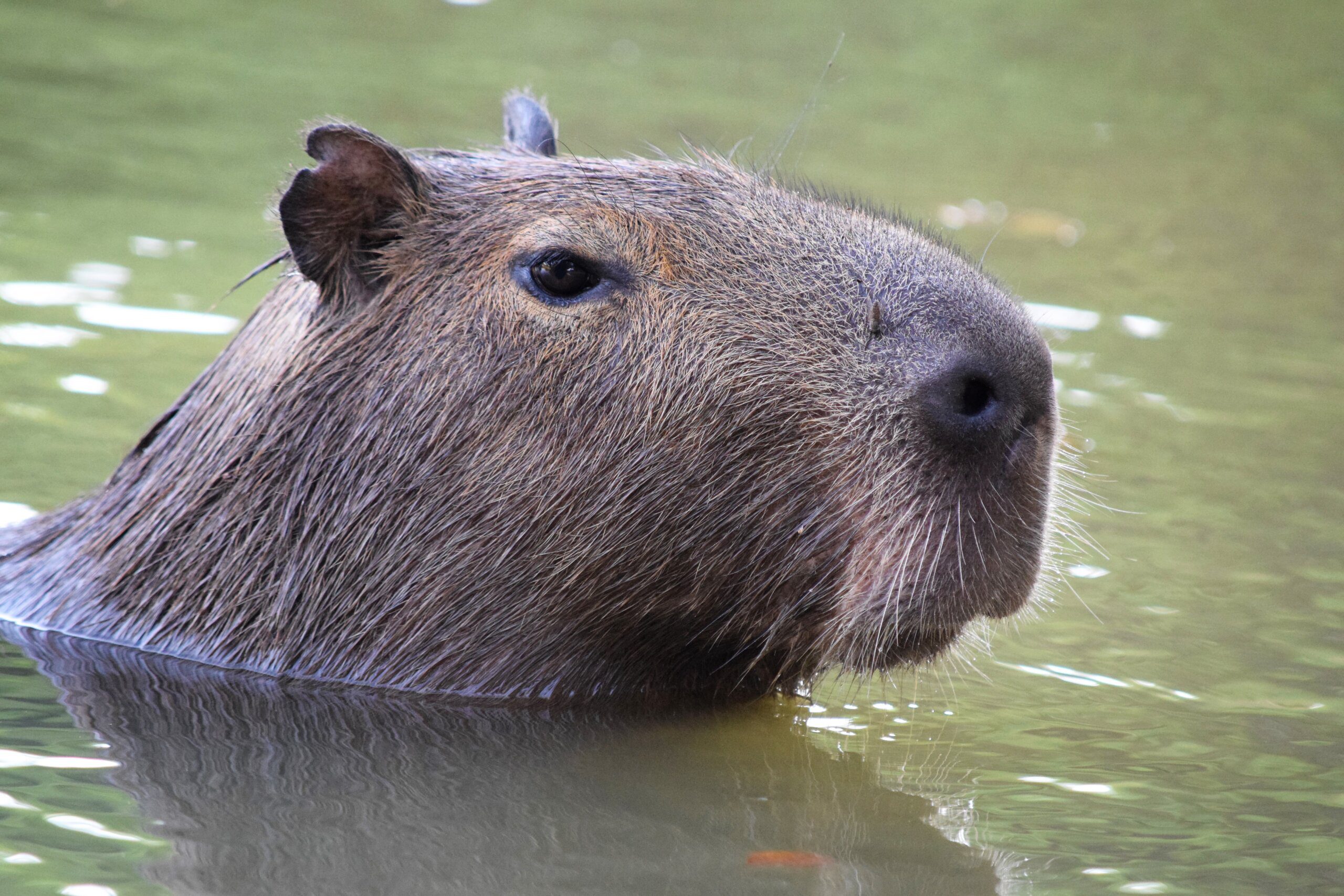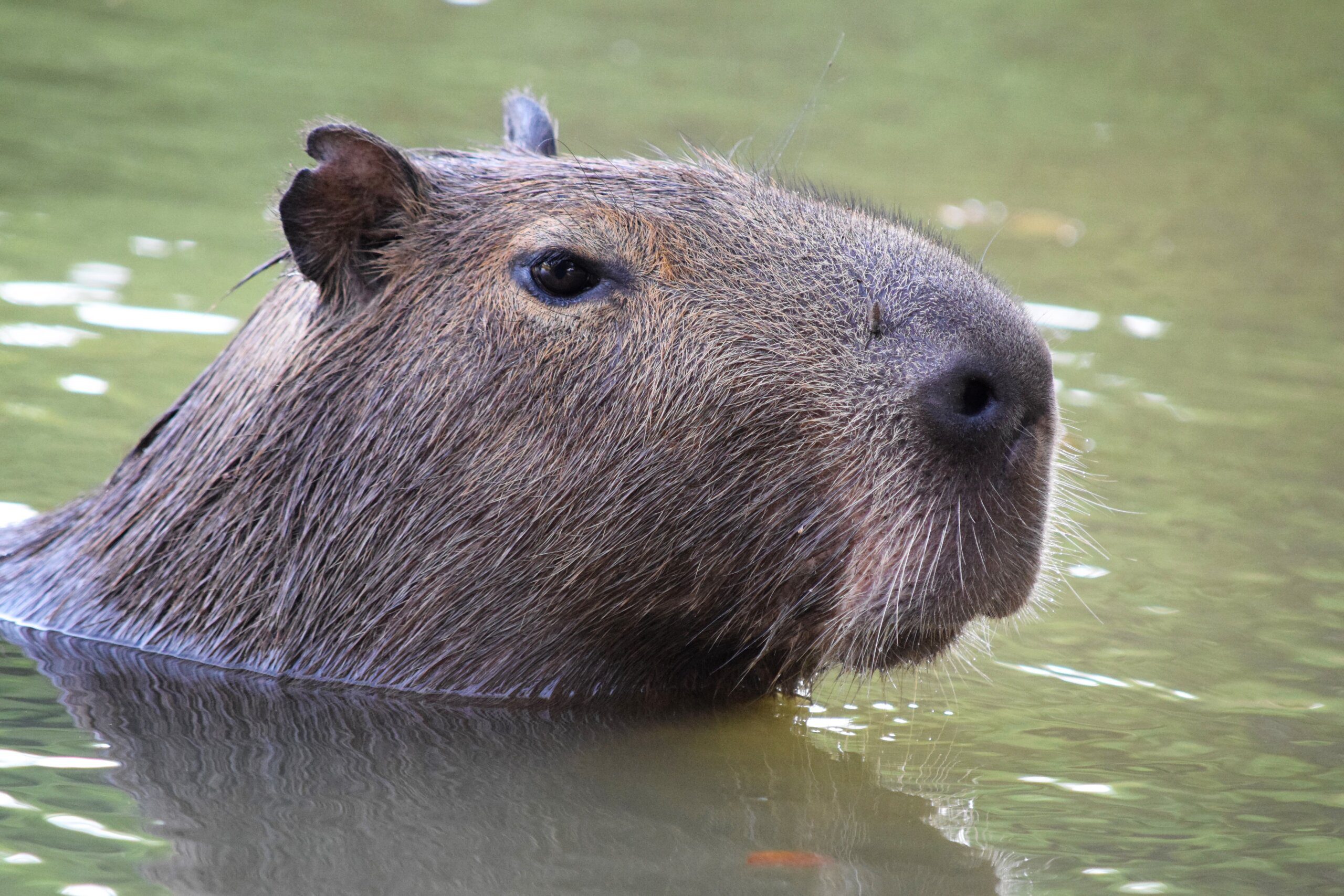Imagine a world where there is an animal that effortlessly gets along with everyone, from birds to reptiles, and even other mammals. Well, you’re in luck, because that animal exists, and it’s called the Capybara. Known for its friendly and sociable nature, the Capybara has won hearts all over the world. Whether it’s forming unlikely friendships with birds perched on its back or peacefully sharing a waterhole with other animals, this giant rodent is the epitome of cool. It’s time to meet the Capybara, a species that reminds us of the power of friendship and acceptance in the animal kingdom.

Appearance and Physical Characteristics
Size and Weight
The capybara is the largest rodent in the world, measuring about 1.2 meters in length and weighing between 35 and 70 kilograms. With their stout bodies and short legs, they have a compact yet muscular frame that allows them to move gracefully both on land and in the water.
Fur and Coloration
Capybaras are well-known for their unique fur, which is thick, coarse, and slightly oily. Their fur can range in color from reddish-brown to dark brown, which helps them blend in with their surroundings. Additionally, their hair is specially adapted to repel water, enabling them to spend long periods in aquatic habitats without feeling weighed down.
Distinct Features
One of the most notable features of the capybara is its large, rounded head with expressive eyes and prominent, rounded ears. The capybara also sports a set of long, sharp incisors that continuously grow throughout its life, allowing it to efficiently feed on vegetation. Another remarkable feature is their webbed feet, which enable them to swim effortlessly and navigate through their aquatic habitats with ease.
Habitat and Distribution
Natural Habitat
Capybaras are native to South America, where they primarily inhabit freshwater ecosystems such as rivers, swamps, and marshlands. They have a strong affinity for water, which is why they are commonly found near bodies of water, basking under the sun or taking a leisurely swim.
Geographical Distribution
These amiable creatures can be found across various South American countries, including Brazil, Argentina, Paraguay, and Venezuela. Their distribution is largely dependent on the availability of suitable water sources and ample vegetation, which are essential for their survival.
Adaptability to Different Environments
Capybaras are incredibly adaptable and can thrive in various environments, ranging from tropical rainforests to savannahs and even human-modified landscapes such as agricultural areas and urban parks. This adaptability is a testament to their resilience and ability to coexist with different species.

Social Behavior
Group Dynamics
Capybaras are highly social animals and are known to live in large groups called herds or troops. These herds consist of several individuals and are usually led by a dominant male and female, forming a hierarchical structure. Living in groups provides them with numerous benefits, including protection from predators and increased opportunities for social interaction.
Communication
Communication is vital among capybaras, and they have a range of vocalizations and body language to convey messages to one another. They produce different sounds such as barks, whistles, and purrs, which can indicate danger or alert other members of the group. Additionally, they use scent marking and tactile communication, such as grooming, to reinforce social bonds and establish dominance within the group.
Interspecies Relationships
Capybaras are incredibly friendly creatures and have earned a reputation for getting along with a wide range of species. They often engage in symbiotic relationships with birds, such as cattle egrets, who benefit from perching on the capybara’s back and feeding off the insects attracted to their fur. These harmonious relationships highlight the capybara’s gentle nature and ability to coexist peacefully with other animals.
Diet and Feeding Habits
Herbivorous Nature
Capybaras are herbivores, meaning their diet consists primarily of plant matter. They have a specialized digestive system that allows them to efficiently extract nutrients from various types of vegetation, including grasses, aquatic plants, and even tree bark. This herbivorous diet is a significant factor in shaping their environment, as they contribute to plant dispersal through their droppings.
Preferred Food Sources
While capybaras have a wide-ranging diet, they have preferred food sources that they actively seek out. Aquatic plants, such as water hyacinths and water lettuce, are highly sought after due to their high water content and nutritional value. They also consume different types of grasses, fruits, and even agricultural crops, which can occasionally bring them into conflict with humans.
Feeding Methods and Patterns
Capybaras typically feed in the early morning and late afternoon, when temperatures are cooler. They use their sharp incisors to graze on grasses and can spend up to six hours per day foraging for food. Due to their size and constant need for nourishment, they have a relatively high daily intake, consuming an average of 3-4 kilograms of plant matter per day.

Nocturnal Activities
Activity Patterns
Although capybaras are not strictly nocturnal, they exhibit crepuscular behavior, meaning they are most active during the twilight hours of dawn and dusk. During this time, they engage in social interactions, foraging, grooming, and exploring their surroundings. This activity pattern allows them to avoid the scorching heat of the day while still taking advantage of the relative safety of daylight.
Senses and Adaptations
Capybaras have outstanding sensory adaptations that aid their nocturnal activities. Their eyes are positioned on top of their heads, allowing for a wide field of vision, which is crucial for detecting predators and potential threats. They also possess acute hearing and a highly developed sense of smell, enabling them to navigate their environment with precision and detect any movement or danger, even in low-light conditions.
Nighttime Behaviors
During the nighttime hours, capybaras often seek out sheltered areas such as burrows or dense vegetation, where they can rest and feel secure. They are known for their communal sleeping habits, where several individuals will huddle closely together to conserve heat and reinforce social bonds. This behavior not only provides them with warmth but also enhances their sense of security and protection against predators.
Reproduction and Family Life
Mating Season
Capybaras breed all year round, although there tends to be a peak in mating activity during the rainy seasons when food sources are more abundant. During this time, males engage in various courtship rituals to attract females, including vocalizations, sniffing, and even gentle nipping. Once a pair has formed a bond, they will remain monogamous for the season or sometimes for life.
Gestation Period
The gestation period of a capybara is approximately 130-150 days, after which the female will give birth to a litter of 2-8 young, known as pups. These newborns are precocial, which means they are relatively well-developed at birth and can follow their mother within hours. The mother provides essential care for her young, nurturing and protecting them until they are old enough to venture out on their own.
Parental Care
Capybara offspring receive significant parental care from both the mother and other members of the herd. The young are nursed for several weeks and gradually transition to a solid food diet. The entire herd actively participates in the rearing of the young, offering protection, guidance, and teaching them vital survival skills. This collective effort ensures the health and well-being of the capybara pups and strengthens the bonds within the herd.
Predators and Defense Mechanisms
Natural Predators
Despite their size, capybaras have several natural predators who pose a threat to their well-being. Large predators such as jaguars, pumas, and anacondas are known to prey on capybaras, especially the young and vulnerable individuals. They must always remain vigilant and rely on their social structure and alertness to mitigate the risks posed by these predators.
Protective Tactics
When faced with predators, capybaras utilize several protective tactics to ensure their survival. Their first line of defense lies in their exceptional swimming abilities, as they take refuge in water bodies to escape land-dwelling predators. Additionally, capybaras are agile runners and can reach surprising speeds on land, allowing them to evade potential threats with ease.
Evasive Techniques
If a capybara senses imminent danger, it will emit a series of loud alarm calls, alerting other members of the group to seek safety. When fleeing from predators, capybaras may also employ a “run and dive” technique, quickly rushing into the water and diving beneath the surface to evade pursuit. These evasive techniques, combined with their large social groups, significantly enhance their chances of survival against predators.
Interaction with Humans
Cultural Significance
Capybaras hold cultural significance in many South American countries, where they are celebrated in various ways. In some indigenous cultures, capybaras are associated with abundance, fertility, and good fortune. They are often depicted in traditional artwork, folklore, and even local festivals, portraying their importance and revered status in these communities.
Domestication
While capybaras have not been widely domesticated, there are instances where they have been kept as pets or used in therapy programs. In some parts of the world, capybaras have found a place in people’s homes, where their gentle nature and sociability make them beloved companions. However, it is essential to note that keeping a capybara as a pet requires specialized care and knowledge to provide a suitable environment and ensure their well-being.
Conservation Status
Capybaras are not currently classified as endangered or threatened, as their population remains relatively stable in their natural habitats. Their adaptability and ability to coexist with human activities have contributed to their conservation. However, habitat loss, hunting, and the pet trade can pose challenges to their long-term survival. It is crucial to continue promoting conservation efforts and sustainable practices to protect their populations and the ecosystems they inhabit.
Myths and Legends
Folklore and Traditional Beliefs
Capybaras have left a mark in folklore and traditional beliefs, captivating the imaginations of different cultures across South America. They are often depicted as symbols of fertility, abundance, and adaptability. In myths and stories, capybaras are portrayed as wise, gentle beings, with tales of their intelligence and harmonious relationships with other animals passed down through generations.
Symbolism and Representations
In various indigenous cultures, capybaras symbolize peace, harmony, and community. They are seen as mediators and peacemakers, emphasizing the importance of social bonds and cooperation. The capybara’s ability to navigate diverse environments also serves as a symbol of adaptability and resilience, inspiring people to embrace change and find strength in unity.
Influences in Art and Literature
The capybara’s unique characteristics and intriguing behavior have made them a subject of fascination in art and literature. They have been immortalized in paintings, sculptures, and illustrations, capturing their essence and providing a glimpse into their captivating world. In literature, capybaras have been featured in children’s books and folklore, teaching valuable lessons about friendship, empathy, and the beauty of the natural world.
Capybara as Pets
Suitability as a Pet
While capybaras may appear adorable and friendly, they require specialized care and a suitable environment to thrive as pets. Their large size and specific dietary needs should be taken into consideration, as well as their need for social interaction and access to water. Prospective owners must also check local regulations and obtain the necessary permits, as keeping a capybara as a pet may not be legal in all areas.
Caring for a Capybara
Providing adequate space, preferably with access to a large outdoor enclosure or a dedicated swimming area, is essential for a pet capybara’s well-being. They also require a balanced diet consisting of various vegetables, grasses, and specialized pellets to meet their nutritional needs. Regular veterinary check-ups, proper hygiene, and mental stimulation are crucial for maintaining their health and happiness.
Legal and Ethical Considerations
Potential capybara owners must consider the legal and ethical implications of keeping them as pets. It is essential to source capybaras responsibly from reputable breeders who prioritize the animals’ welfare and work towards conserving their wild counterparts. Additionally, owners should ensure that their lifestyle and living conditions are suitable for pet capybaras, with a commitment to long-term care and responsible ownership.



